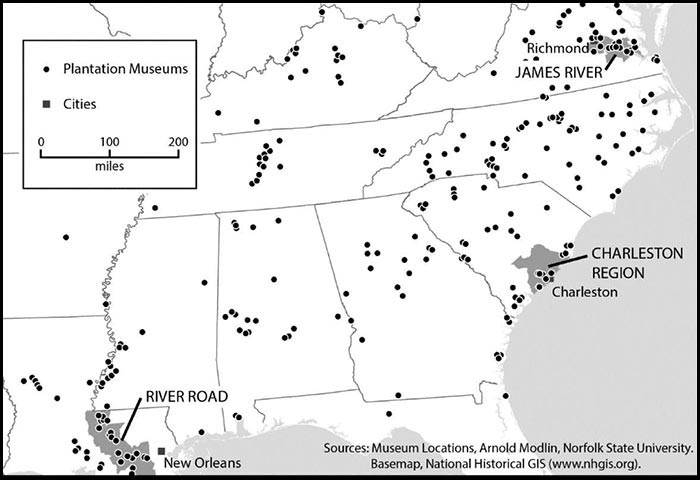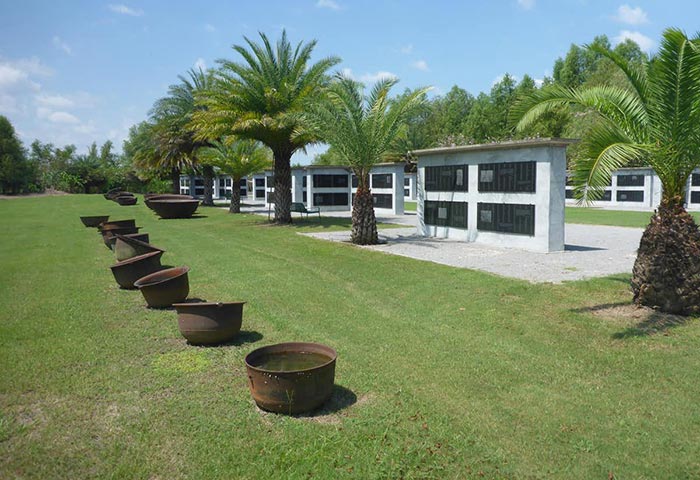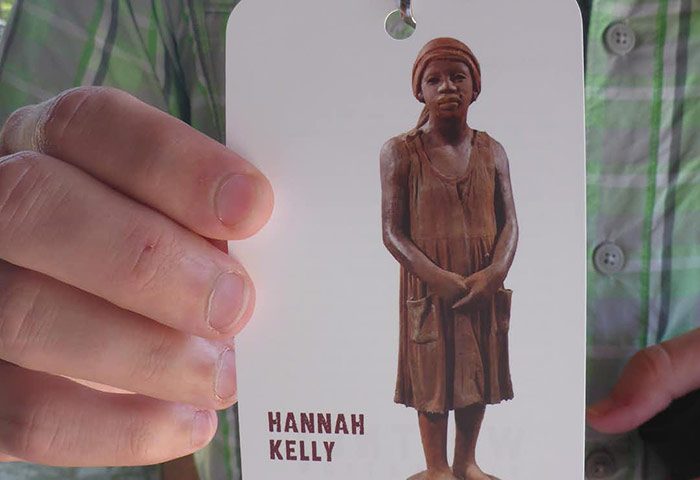(This story is adapted from an article that originally appeared in The Conversation on March 15, 2022, by Amy Potter, Associate Professor of Geography at Georgia Southern University, and Derek H. Alderman, Professor of Geography at the University of Tennessee.)
Whether they know it or not, kids have recently become the eye of the storm for an adult culture war over how we understand race in our country. State legislatures across the U.S. are cracking down on discussions of race and racism in the classroom. School boards are attempting to ban books that deal with difficult histories. Lawmakers are targeting initiatives that promote diversity, equity, and inclusion in higher education.
Despite such efforts to stifle how we teach the history of slavery in the U.S. and its effects, we see a potential venue for fruitful discussions that we believe to be an overlooked and poorly used resource: the hundreds of plantation museums that dot the southeastern U.S.
These sites have traditionally romanticized life before the Civil War, ignored or trivialized the horrors of slavery, and downplayed the resistance and resilience of enslaved communities. Nevertheless, we think that plantation museums could be important sites for an educational reckoning with this difficult aspect of America’s past.
However, that can only happen if the people who run these museums are committed to telling the truth about what took place, rather than perpetuating myths about Black life in the U.S. under white domination and oppression.
Reforms needed
In order to make better use of plantation museums as places to learn about racism and slavery, the museums must do far more than just entertain tourists and sell a heritage experience. They need to rework almost every facet of the museum – from misguided tours that gloss over the harsh living conditions of the enslaved, to marketing artifacts and materials that emphasize the opulent and picturesque mansions of the slaveholders. In fact, in our research we discovered plantation museums where 50 percent of the tours don’t even mention slavery. Our work provides practical guidance to the changes that can best serve the educational needs of the thousands of students who visit plantations every year.

Many former plantations are now museums. Stephen Hanna, CC BY
Problematic places of learning
Within the U.S., there are at least 375 plantations open for public tours scattered across 19 states. Based on nearly 2,000 surveys our research team conducted, visitors have indicated that they go to plantations to “learn about history.” The general public considers historical sites, such as plantation museums, to be trusted sources for historical information. Therefore, we believe that they should be held accountable for the educational experience they provide.
School field trips are an important revenue source for these often cash-strapped sites. At Shirley Plantation in Virginia, field trips accounted for more than 15 percent of total visitors. At Meadow Farm, near Richmond, Virginia, 40 percent of the site’s visitors are school children. At Boone Hall in South Carolina, 14,000 school children visit the site annually.
Whitewashing history
At one Virginia plantation museum, we observed school children go on scavenger hunts where they take on the roles of white slave owners. In one case, the children deliver a message between the white slave owner’s son — a Confederate soldier — and his sick mother while their plantation was occupied by Union troops. This, we believe, leads the children to identify and empathize with the white slave-owning family as opposed to the individuals they enslaved.
Toward reparative education
Our work calls for plantation museums to come to terms with the injustices of the past and correct the way enslavement is actively misremembered, which fails to educate all students and especially harms Black well-being and sense of belonging.
Repairing these historical falsehoods is not just about getting the facts correct. Too often museums have overlooked how enslaved labor was used to construct America’s infrastructure and ignored the histories of individual Black lives. Reparative education also requires the public to learn certain emotional and social truths about how slavery is a source of pain and tension in the U.S. Lessons should show how this tension continues to affect race relations to this day.
But there is promising evidence of change at sites like McLeod Plantation on James Island in Charleston, South Carolina, which opened in 2015, less than a year after the more well-known Whitney Plantation in Louisiana.
We see both museums — Whitney and McLeod — as exceptional in plantation tourism. We found that these two sites attract a more racially diverse group of visitors than many other plantations because of the inclusive stories being told. Our surveys with visitors suggest public interest in the topic of slavery increased after taking guided tours that focused on the experiences of enslaved communities. This is a needed counterpoint to media reports of some visitors pushing back against hearing these sober discussions. For instance, tour guides at McLeod reported white visitors yelling at them, claiming the tour attacked their ancestors.
Both of these plantation tours represent an important and truthful way of educating the public about the realities of slavery. Here are three things that stood out during our assessment of the Whitney plantation and the McLeod plantation.

At the Whitney Plantation in Louisiana, marble walls memorialize those who were enslaved. Amy Potter, CC BY
-
Plantation tours talk about the lives of both the slaveholders and the enslaved
We think it’s important to feature slavery and the lives of the enslaved during all aspects of the tour and not keep it separate in a special exhibit.
Visitors should be given an opportunity to make thoughtful connections to those who were once enslaved by learning names and details about their lives. At Whitney, for example, visitors are encouraged to make emotional connections. One way they do this is by receiving a lanyard at the start of the tour that features the words and image of a formerly enslaved child.
-
Plantation tours give visitors space to contemplate their experience at the plantation
We know the plantation can be an especially fraught and emotional experience, particularly for Black visitors. During our fieldwork, Black visitors would often describe the land as sacred and a powerful place to connect to the ancestors. Some of these plantations have even hosted Black family reunions. Whitney Plantation gives visitors a chance to think and reflect on what they’ve seen and heard during tours, as well as benches where they can sit near a wall that memorializes and honors the people who were enslaved there.
-
Plantation tour guides are knowledgeable, prepared for pushback, and supported by management
McLeod’s managers purposely hired guides who would disrupt romantic notions of the plantation and engage meaningfully with themes of slavery, race, and social justice. They also provided ongoing training and support to guides doing the difficult work of challenging long-held plantation myths.
Managers at McLeod took extra steps to support their guides by initiating a “golden hour.” This was a time for staff to come together and reflect on difficult encounters with the visitors, who sometimes challenged guides’ historical knowledge and fairness. It was also a time for the guides to develop strategies to cope with the emotional toll of the hostility they faced while doing their jobs.
If slavery is, as historian Ira Berlin argues, “ground zero for race relations,” then the plantations and their museums seem like natural places to confront the ugly history of the U.S.’s slave-owning past and the ramifications that history holds for us now. But our students will only benefit from that knowledge if history is presented fully, openly, and honestly.

A man visiting the Whitney Plantation in Louisiana holds up a lanyard featuring an image of an enslaved child named Hannah Kelly. Amy Potter, CC BY






